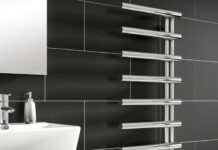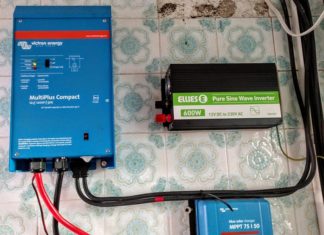
In the realm of electrical systems, switchboards play a critical role in managing and distributing power safely and efficiently. Whether you’re dealing with a residential setup, a commercial establishment, or an industrial facility, understanding switchboards is essential for maintaining electrical safety and optimizing energy usage.
Let’s talk about the fundamentals of switchboards, their components, types, and the importance of regular maintenance.
What is a Switchboard?

A switchboard is an assembly of electrical panels designed to direct electricity from one or more sources to various loads. It functions as the control center for an electrical distribution system, allowing operators to manage and protect circuits and equipment. Switch boards are found in a wide range of applications, from small homes to large industrial complexes.
Key Components of a Switchboard
Understanding the components of a switchboard is essential for comprehending its operation and maintenance needs. Here are the primary elements:
1. Main Switch
The main switch is the primary control device for the switchboard, enabling the entire electrical system to be turned on or off. It provides a straightforward way to disconnect power in emergencies or during maintenance.
2. Circuit Breakers
Circuit breakers protect the electrical circuits from overloading or short circuits by automatically cutting off the power when abnormal conditions are detected. They can be reset manually or automatically to restore power after resolving the issue.
3. Busbars
Busbars are thick strips of copper or aluminum that conduct electricity within the switchboard. They distribute power to various circuits and components, ensuring efficient and reliable electrical flow.
4. Meters and Gauges
Meters and gauges provide real-time data on electrical parameters such as voltage, current, and frequency. This information helps operators monitor the system’s performance and detect potential issues early.
5. Protective Relays
Protective relays are devices that monitor electrical parameters and initiate protective actions when abnormalities are detected. They play a crucial role in preventing damage to equipment and ensuring the safety of the electrical system.
6. Switches and Controls
Switches and controls allow operators to manage the distribution of electricity to different circuits and loads. They can be manual or automated, providing flexibility in how power is distributed and controlled.
Types of Switchboards

Switchboards come in various types, each suited for different applications and environments. Here are the most common types:
1. Low Voltage Switchboards
Low voltage switchboards are used in residential and light commercial applications where the voltage levels are relatively low. They provide distribution and protection for circuits operating at voltages up to 1,000 volts.
2. Medium Voltage Switchboards
Medium voltage switchboards are used in commercial and industrial settings where higher voltage levels are required. They handle voltages ranging from 1,000 to 35,000 volts and are essential for distributing power to larger facilities.
3. High Voltage Switchboards
High voltage switchboards are used in heavy industrial applications and power generation facilities. They manage voltages above 35,000 volts and are designed to handle large amounts of power safely and efficiently.
4. Motor Control Centers (MCCs)
MCCs are specialized switchboards designed to control and protect electric motors. They are used in industrial environments where multiple motors need to be managed simultaneously, providing centralized control and protection.
Importance of Regular Maintenance
Regular maintenance of switchboards is crucial for ensuring their reliability, safety, and efficiency. Here are some key reasons why maintenance is essential:
1. Preventing Electrical Failures
Regular inspections and maintenance help identify potential issues before they lead to electrical failures. This proactive approach minimizes downtime and prevents costly repairs.
2. Ensuring Safety
Faulty switchboards can pose significant safety risks, including electrical fires and electrocution. Regular maintenance ensures that all components are in good working condition, reducing the risk of accidents.
3. Optimizing Performance
Well-maintained switchboards operate more efficiently, leading to better overall performance of the electrical system. This optimization can result in lower energy costs and improved reliability.
4. Compliance with Standards
Electrical systems must comply with various safety and performance standards. Regular maintenance helps ensure that switchboards meet these standards, avoiding legal issues and potential fines.
Tips for Maintaining Switchboards

Effective maintenance of switchboards involves several key practices. Here are some tips to help you keep your switchboards in top condition:
1. Regular Inspections
Conduct regular visual inspections to check for signs of wear and tear, such as loose connections, corrosion, or damaged components. Address any issues promptly to prevent further damage.
2. Testing and Calibration
Regularly test and calibrate protective devices such as circuit breakers and relays to ensure they function correctly. This testing helps verify that the devices will respond appropriately in case of an electrical fault.
3. Cleaning
Dust and debris can accumulate inside switchboards, leading to overheating and electrical faults. Regular cleaning helps maintain proper ventilation and prevents contamination of electrical components.
4. Upgrading Components
As technology advances, newer and more efficient components become available. Consider upgrading outdated components to improve the performance and reliability of your switchboards.
5. Documenting Maintenance Activities
Keep detailed records of all maintenance activities, including inspections, tests, and repairs. This documentation helps track the condition of the switchboards and ensures that maintenance schedules are followed.
Conclusion
Switchboards are the backbone of electrical distribution systems, ensuring the safe and efficient flow of electricity to various loads. Understanding their components, types, and the importance of regular maintenance is crucial for anyone involved in managing electrical systems. By following the tips outlined in this guide, you can ensure that your switchboards operate reliably and safely, contributing to the overall performance and longevity of your electrical infrastructure. Whether you’re dealing with a small residential setup or a large industrial facility, proper care and maintenance of switchboards are essential for optimal electrical performance.















